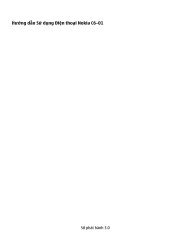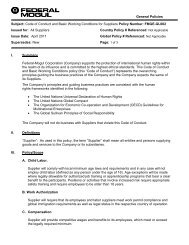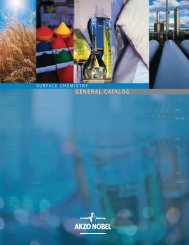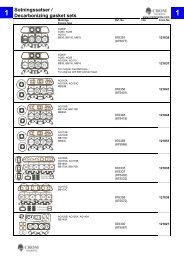You also want an ePaper? Increase the reach of your titles
YUMPU automatically turns print PDFs into web optimized ePapers that Google loves.
A<br />
ENGINEERING<br />
<strong>Precision</strong> Tapered Roller Bearing Types<br />
The size range of <strong>Timken</strong> precision tapered roller bearings starts<br />
from less than 20.000 mm (0.7874 in.) bore and extends to more<br />
than 2000.000 mm (78.7402 in.) O.D., depending on bearing type. The<br />
most popular types made in precision classes are the single-row<br />
TS and flanged TSF as shown in Sec. B. Comprised of two main<br />
separable parts, they are usually fitted as one of an opposing pair.<br />
These bearing types are supported by a range of special bearings<br />
which have been designed <strong>for</strong> machine tool applications, such<br />
as the variable preload Hydra-Rib bearing, the high-speed TSMA<br />
bearing, and the compact TXR crossed roller bearing, which is<br />
available only in precision classes. <strong>Timken</strong> also offers a selection of<br />
two-row precision tapered roller bearings types such as the double<br />
outer ring type TDO.<br />
Crossed Roller <strong>Bearings</strong><br />
A crossed roller (TXR) bearing is comprised of two sets of bearing<br />
races and rollers brought together at right angles to each other,<br />
with alternate rollers facing opposite directions, within a section<br />
height not much greater than that of a single-row bearing. Also,<br />
the steep-angle, tapered geometry of the bearing causes the loadcarrying<br />
center of each of the races to be projected along the axis,<br />
resulting in a total effective bearing spread many times greater than<br />
the width of the bearing itself.<br />
Because of the ability of the crossed roller bearing to withstand high<br />
overturning moments, it is ideal <strong>for</strong> the table bearing of machine<br />
tools such as vertical boring and grinding machines. This bearing<br />
also is well-suited <strong>for</strong> other pivot and pedestal applications where<br />
space is limited or the lowest possible center of gravity of a rotating<br />
mass is required.<br />
Crossed roller bearings are available in two precision classes:<br />
• Metric system Class S and P.<br />
• Inch system Class 3 and 0.<br />
The most common <strong>for</strong>m of the bearing is type TXRDO, which has<br />
a double outer race and two inner races, with rollers spaced by<br />
separators.<br />
Other mounting configurations and sizes of crossed roller bearings<br />
can be supplied to meet particular assembly or setting requirements.<br />
Please contact your <strong>Timken</strong> representative <strong>for</strong> further in<strong>for</strong>mation.<br />
Also, refer to Section B <strong>for</strong> more details.<br />
Fig. 10. TXRDI and TXRDO.<br />
Hydra-Rib <strong>Bearings</strong><br />
TXRDI<br />
TXRDO<br />
Experience has demonstrated that by optimizing the design<br />
parameters of bearing geometry, spindle diameter, bearing spread,<br />
lubrication system and mounting, the two single-row bearing layout<br />
provides good results over a range of speeds and power. However,<br />
<strong>for</strong> very wide variations of speed and load, the variable preload<br />
<strong>Timken</strong> Hydra-Rib bearing concept is an excellent solution.<br />
The Hydra-Rib bearing (Figure 11) has a floating outer ring rib in<br />
contact with the large roller ends instead of the usual fixed inner<br />
ring rib. This floating rib operates within a sealed cavity at a given<br />
pressure controlled by an appropriate hydraulic or pneumatic<br />
pressure system. Changing the pressure consequently changes<br />
the preload in the bearing system.<br />
Fig. 11. Exploded view of a typical Hydra-Rib TM bearing.<br />
22 TIMKEN MACHINE TOOL CATALOG







